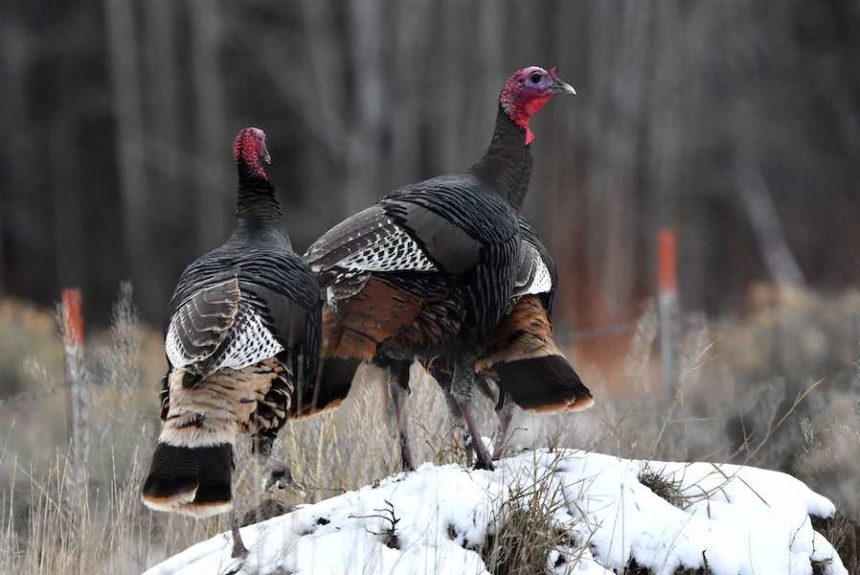Wild turkeys galore in Upper Valley
Published at
Before the last snow, I was driving in the hills above Rexburg in the Moody Creek area when I was forced to stop and watch 38 wild turkeys cross the road. More than half of them appeared to be this year’s hatch. A week later, I was west of the Junipers looking for buck Mule deer when I saw a flock cross the Egin/Hamer Road. It was a strange place to see them, but I guess they can clean up the juniper berries and raid area grain stubble.
This week, I hiked through the South Fork of the Teton River bottoms looking for some Great gray owls, but found flock after flock of turkeys scratching in the patches of wild roses and Hawthorn berry bushes. I hid in some thick brush and had several flocks work their way toward the mature cottonwoods where they roost for the night. Some of the flocks had 30 to 60 birds in them and I counted 132 turkeys as they worked their way past me.
This fall, I have seen turkeys along the Henrys Fork of the Snake River, in the Moody and Heise areas in large numbers. It looks like the original plants from many years ago have done what the Department of Fish and Game wanted. I know of several people who have homes — expensive ones — that call them the “dirty-birds” because of all the poo they leave behind after they visit. I just tell them the birds were here first.

Most of the turkeys appear to be wild birds, dressed in the traditional browns and tans, while some of them along the South Fork of the Snake River and Henrys Fork appear to be crosses with some tame or white ones. It will be interesting to see what the Department of Fish and Game do with future hunts and seasons.
A little about the fishing and the migration of big game right now. It appears that the fishing on Henrys Lake has slowed down a lot. Under the ice they move very slowly and mostly just bump the bait and lures. Most fishermen are reporting only catching one or two in four hours of fishing, but some of them have taken some big fish this last week.
The slow fishing is usually caused by the lowering of oxygen in the water as it is used up by rotting of the weeds. This causes the fish to go into a semi hibernating stage where they quit feeding as they move slowly along the bottom of the lake. Next week, I will probably visit Henrys one more time before I move to Island Park or Ririe Reservoir. Island Park is frozen over and fishermen have been reporting success near the dam whereas Ririe is still ice-free and probably will not freeze over until mid-January.

Elk and deer are still migrating across Highway 20 from Ashton Hill to Last Chance. There is also a large herd of elk on the south side of Henrys Lake. If we get a heavy snowstorm, the elk in Island Park will have to move out to the high desert lands.
Once they get on the desert, they will head for the farmland surrounding Interstate 15 from Roberts to Dubois where about 100 elk were killed crossing the interstate last winter. There are already several large herds of elk on the farms east of the road waiting for snow to force them to cross it.
No matter which roads you travel in the Upper Snake River Valley, you may encounter large animals crossing the road. On recent trips to Island Park, Swan Valley and Highway 33 to Howe, I have had to slow down for elk, deer and antelope and even turkeys. Drive carefully and enjoy these wild things from a distance. Mornings and early evenings increase your opportunity to see them.


Living the Wild Life is brought to you by The Healing Sanctuary.


